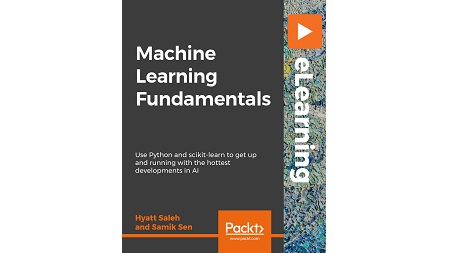
English | MP4 | AVC 1280×720 | AAC 44KHz 2ch | 3h 18m | 525 MB
With the flexibility and features of scikit-learn and Python, build machine learning algorithms that optimize the programming process and take application performance to a whole new level.
You’ll begin by learning how to use the syntax of scikit-learn. You’ll study the difference between supervised and unsupervised models, as well as the importance of choosing the appropriate algorithm for each dataset. You’ll apply unsupervised clustering algorithm over 1990 US Census dataset, to discover patterns and profiles, and explore the process to solve a supervised machine learning problem. Then, the focus of the course shifts to supervised learning algorithms. You’ll learn to implement different supervised algorithms and develop neural network structures using the scikit-learn package. You’ll also learn how to perform coherent result analysis to improve performance of the algorithm by tuning hyperparameters. When it finishes, this course would have given you the skills and confidence to start programming machine learning algorithms.
What You Will Learn
- Understand the importance of data representation
- Gain insight into the difference between supervised and unsupervised models
- Explore the data using the Matplotlib library
- Study popular algorithms, such as K-means, Gaussian Mixture, and Birch
- Implement a confusion matrix using scikit-learn
- Study popular algorithms, such as Naïve-Bayes, Decision Tree, and SVM
- Visualize errors in various models using matplotlib
Table of Contents
01 Course Overview
02 Installation and Setup
03 Lesson Overview
04 Scikit-Learn
05 Data Representation
06 Data Preprocessing
07 Scikit-Learn API
08 Supervised and Unsupervised Learning
09 Lesson Summary
10 Lesson Overview
11 Clustering
12 Exploring a Dataset – Wholesale Customers Dataset
13 Data Visualization
14 k-means Algorithm
15 Mean-Shift Algorithm
16 DBSCAN Algorithm
17 Evaluating the Performance of Clusters
18 Lesson Summary
19 Lesson Overview
20 Model Validation and Testing
21 Evaluation Metrics
22 Error Analysis
23 Lesson Summary
24 Lesson Overview
25 Exploring the Dataset
26 Naïve Bayes Algorithm
27 Decision Tree Algorithm
28 Support Vector Machine Algorithm
29 Error Analysis
30 Lesson Summary
31 Lesson Overview
32 Artificial Neural Networks
33 Applying an Artificial Neural Network
34 Performance Analysis
35 Lesson Summary
36 Lesson Overview
37 Program Definition
38 Saving and Loading a Trained Model
39 Interacting with a Trained Model
40 Lesson Summary
Resolve the captcha to access the links!